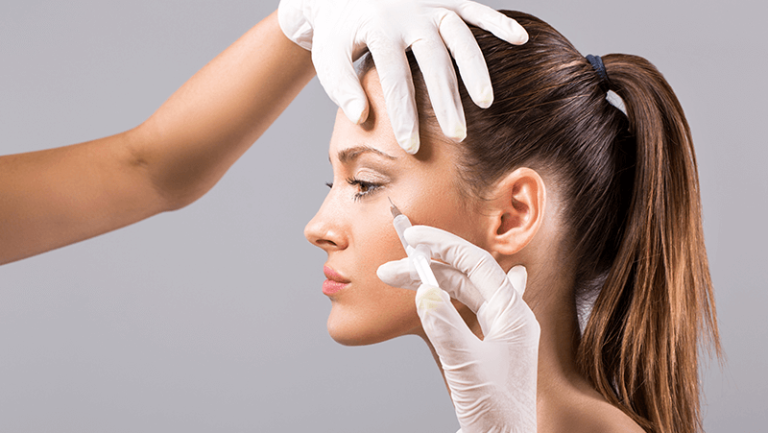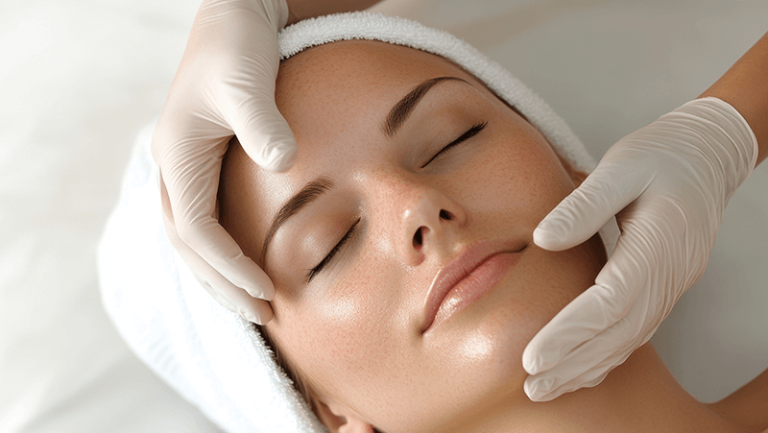Why It’s More Common Than You Think and What You Can Do
Hair loss is often perceived as a male-centric concern, but millions of women experience it too—often silently, with frustration, embarrassment, or confusion. While it’s common to shed 50–100 hairs a day, noticeable thinning or bald spots can indicate something more. For many women, hair loss is not just a cosmetic issue—it’s emotional and deeply personal. The good news? Modern hair restoration treatments offer hope and proven results.
In this article, we’ll dive into why hair loss in women is so prevalent, what causes it, and the advanced treatment options available to help restore confidence and a healthy scalp.
Women Hair Loss
Despite societal myths, hair loss in women is far from rare. According to the American Academy of Dermatology, about 40% of people who experience hair loss are women. Many begin to notice it in their 20s or 30s, while others see more significant thinning during perimenopause and menopause.Unlike male-pattern baldness—which usually follows a receding hairline—female hair loss often appears as diffuse thinning across the scalp, especially at the crown and along the part line. Because it doesn’t follow the same pattern, it can sometimes be harder to detect or diagnose early.
What Causes Hair Loss in Women?
Hair loss can stem from a wide range of physical, hormonal, genetic, or lifestyle-related factors. Here are the most common culprits:
1. Hormonal Imbalance
Women’s hormones fluctuate significantly during menstruation, pregnancy, childbirth, and menopause. A decline in estrogen and progesterone can shorten the growth phase of hair, causing increased shedding and slower regrowth.
Polycystic Ovary Syndrome (PCOS) and thyroid disorders can also affect hormone levels and contribute to thinning.
2. Stress and Trauma
Chronic emotional stress, a sudden shock (like surgery or a death in the family), or physical trauma to the body can lead to telogen effluvium, a temporary but significant hair shedding phase.
3. Nutritional Deficiencies
Hair is a fast-growing tissue and needs proper nourishment to thrive. Low levels of iron, vitamin D, biotin, zinc, and protein can lead to weaker, thinner hair or excessive shedding.
4. Genetics
If your mother, grandmother, or sister experienced hair thinning, your risk may be higher. Female-pattern hair loss (androgenetic alopecia) can be inherited and often begins in midlife.
5. Medical Treatments and Medications
Certain medications—including those for blood pressure, depression, chemotherapy, and birth control—can trigger hair loss. Medical treatments like radiation or autoimmune disorders like alopecia areata may also impact hair growth.
6. Tight Hairstyles and Overstyling
Frequent use of tight ponytails, braids, or buns can lead to traction alopecia, where repeated tension damages hair follicles. Excessive heat styling, chemical treatments, or bleach can also weaken the hair shaft.
Signs You May Be Experiencing Hair Loss
Hair loss isn’t always immediately obvious. These signs can indicate early or progressing thinning:
- A noticeably wider part or scalp showing through
- Excessive hair left in brushes, on pillows, or in the shower
- A reduction in ponytail thickness
- Bald patches, especially at the crown or temples
- Slow regrowth after shedding
- Changes in hair texture (becoming finer or more brittle)
If any of these symptoms sound familiar, it’s time to take a proactive approach to restoration.
How Hair Restoration Works
Advanced Solutions That Actually Deliver
Fortunately, today’s hair restoration technologies are more effective, less invasive, and more personalized than ever. Rather than covering up hair loss with extensions or wigs, you now have the option to target the problem at its root.
Platelet-Rich Plasma (PRP) Therapy for Hair Restoration
One of the most promising and widely used treatments for hair restoration is Platelet-Rich Plasma (PRP) therapy. This natural approach uses your body’s own healing platelets to stimulate dormant or weakened hair follicles.
How PRP Works:
- A small amount of your blood is drawn and spun in a centrifuge to isolate the plasma.
- The platelet-rich portion—full of growth factors—is then injected into the areas of hair loss.
- These growth factors stimulate cell regeneration and enhance blood supply to the follicles, encouraging new hair growth.
PRP therapy typically involves a series of treatments spaced weeks apart, followed by maintenance sessions. Patients often report:
- Thicker, stronger hair strands
- Reduced shedding
- Visible regrowth within months
It’s safe, minimally invasive, and has no downtime, making it ideal for women looking for a natural hair restoration option.
Lifestyle & At-Home Changes to Support Hair Health
In addition to professional treatments, lifestyle improvements and hair care practices can significantly enhance your results.
1. Balanced Nutrition
Focus on whole foods rich in iron, protein, zinc, and omega-3 fatty acids. Consider supplements if you’re deficient in key hair-supporting nutrients like vitamin D or biotin.
2. Stress Management
Incorporate daily stress-relieving activities like yoga, meditation, or exercise. Even a 15-minute walk can help reduce cortisol, a hormone linked to hair shedding.
3. Gentle Hair Care
Use sulfate-free shampoos and limit heat styling. Avoid brushing wet hair and choose silk pillowcases to minimize breakage and friction.
4. Regular Scalp Care
Healthy hair starts with a healthy scalp. Use mild exfoliating treatments or scalp massages to boost circulation and remove buildup.
When to Seek Professional Help
Hair loss can feel isolating, but you don’t have to go through it alone. If you’ve noticed persistent shedding, bald spots, or thinning for more than three months, it’s time to consult with a professional who can:
- Identify the root cause of your hair loss
- Recommend personalized treatment plans
- Monitor progress and adjust strategies as needed
Early intervention makes a significant difference in treatment outcomes. The sooner you address the issue, the more likely you are to achieve fuller, stronger hair.
Why Choose Skin Bar Med Spa for Hair Restoration?
At Skin Bar Med Spa, we go beyond surface-level solutions. Our expert team uses advanced, evidence-based treatments to address the root causes of hair loss in women. From PRF (Platelet-Rich Fibrin) therapy to tailored wellness support, we create a customized plan designed to restore your hair’s vitality and boost your confidence. We take pride in offering a compassionate, discreet, and results-driven approach in a luxurious med spa environment.
What Makes Today’s Hair Restoration Different
Unlike past solutions that simply covered hair loss, today’s medical-grade hair restoration techniques target the root cause—often on a cellular level. Treatments like PRP do more than stimulate follicles; they reactivate your body’s own regenerative capacity.
Personalized consultations ensure your plan matches your hair type, health history, and goals. Whether you’re dealing with thinning from stress, hormones, or genetics, a tailored approach is key to lasting results.
You’re Not Alone—and There Is a Solution
Hair loss in women is far more common than many realize, but it doesn’t have to control your confidence or quality of life. By understanding the underlying causes and exploring trusted, effective restoration options like PRP therapy, you can reclaim not just your hair—but your self-esteem.
Whether your goal is to fill in thinning areas, slow down shedding, or promote long-term scalp health, professional hair restoration offers a proactive, empowering solution. It’s not just about appearance—it’s about how you feel in your own skin.
Women Hair Loss FAQs
1. What causes hair loss in women?
Hair loss in women can be caused by a variety of factors including hormonal imbalances, stress, nutritional deficiencies, genetics, thyroid issues, and certain medications. Overstyling or tight hairstyles can also contribute to hair thinning or traction alopecia.
2. Is female hair loss reversible?
In many cases, yes. If the root cause is identified early—such as stress, hormonal shifts, or nutritional gaps—hair loss may be slowed or reversed with targeted treatments and lifestyle changes. Advanced therapies like PRP can also stimulate regrowth.
3. How does PRP therapy help with hair restoration?
PRP (Platelet-Rich Plasma) therapy uses growth factors from your own blood to rejuvenate hair follicles and promote new hair growth. It improves blood supply to the scalp, strengthens existing hair, and can lead to visibly thicker, fuller hair over time.
4. How many PRP treatments will I need for hair restoration?
Most patients see the best results after 3 to 6 initial sessions, spaced about 4 to 6 weeks apart, followed by maintenance treatments every few months. Your provider will customize a plan based on your hair loss severity and goals.
5. Is PRP hair restoration safe for women of all ages?
Yes. PRP is a safe, non-surgical treatment suitable for women experiencing early to moderate hair thinning. Since it uses your body’s own plasma, there is minimal risk of allergic reaction or complications.
6. How soon will I see results from PRP hair restoration?
Most women begin to see a reduction in hair shedding within the first 1–2 months, with noticeable thickening and new growth typically visible after 3–6 months of consistent treatment.
7. Can I combine PRP with other hair restoration methods?
Absolutely. PRP can be used alongside other treatments such as topical minoxidil, nutritional supplements, low-level laser therapy, or medical-grade hair care products to enhance and maintain results.
Ready to Restore Your Hair and Confidence?
Don’t let hair loss hold you back. At Skin Bar MedSpa, we specialize in advanced hair restoration treatments tailored to your needs. Whether you’re dealing with thinning hair, hormonal hair loss, or stress-related shedding, our experienced team is here to help you achieve thicker, healthier hair.
Visit us at Skin Bar MedSpa, conveniently located in Westminster, CO, or call us at (720) 665-5540 to schedule your personalized consultation today. Your journey to hair confidence starts here




